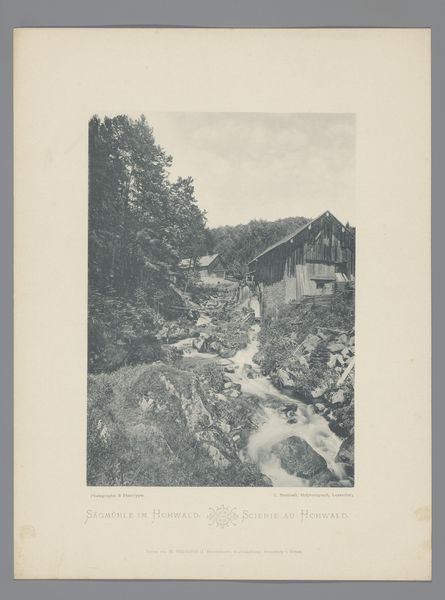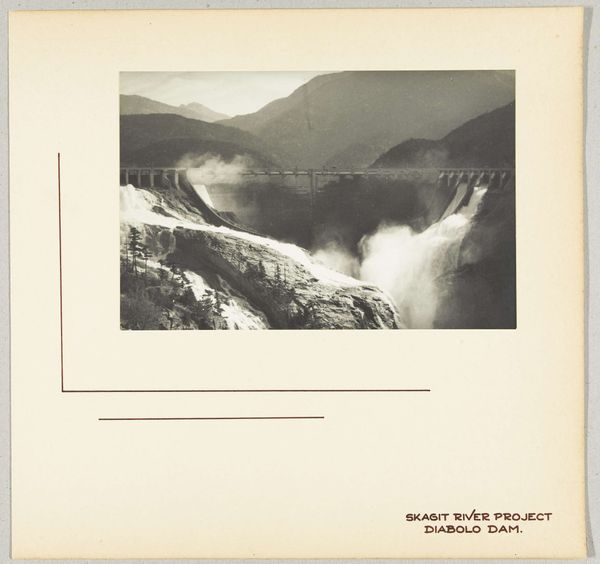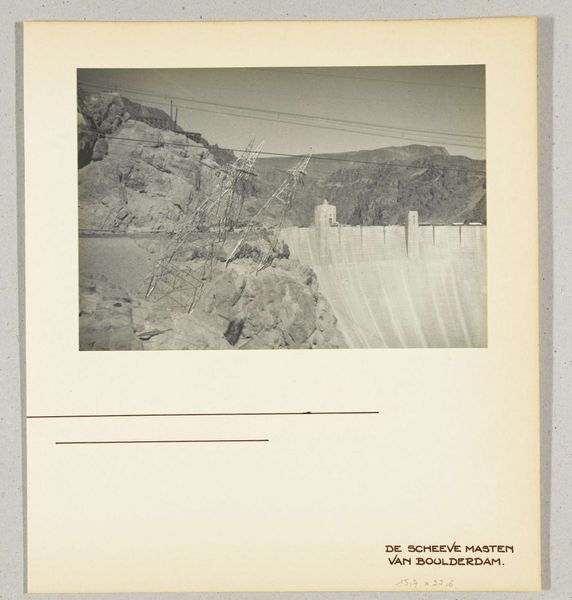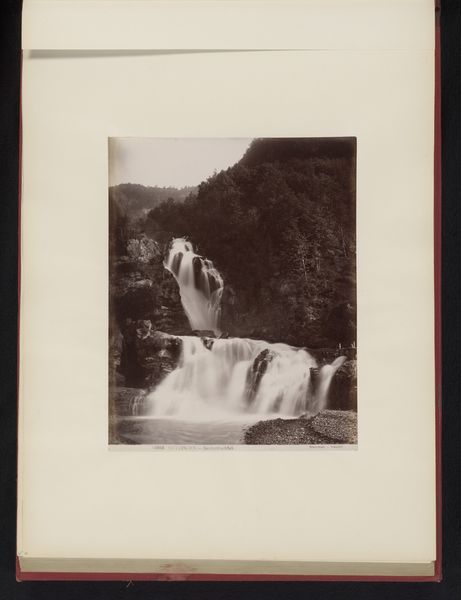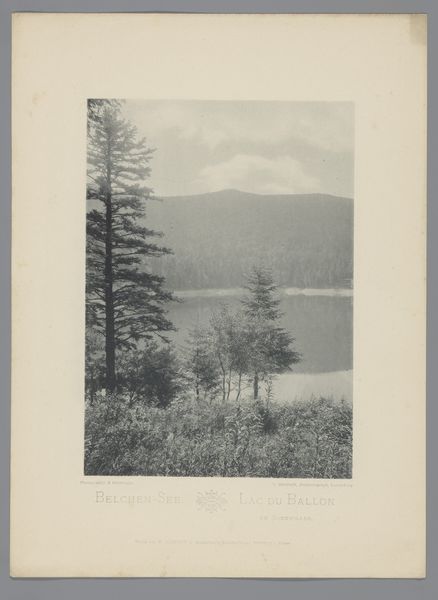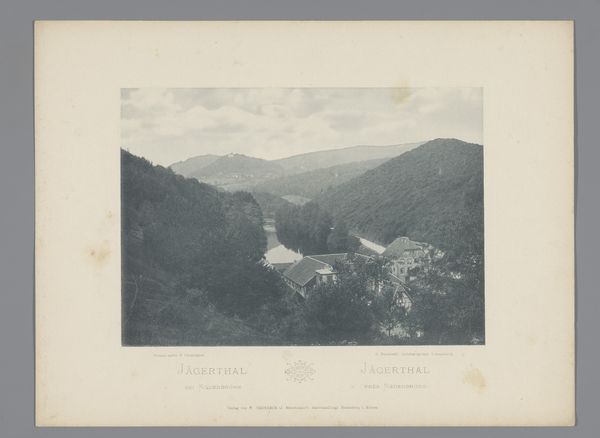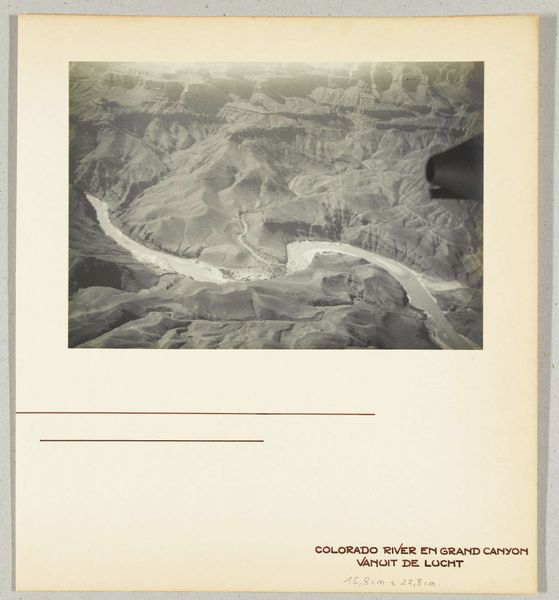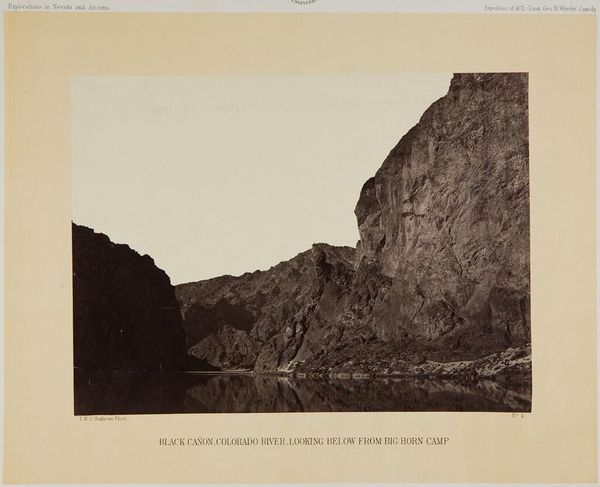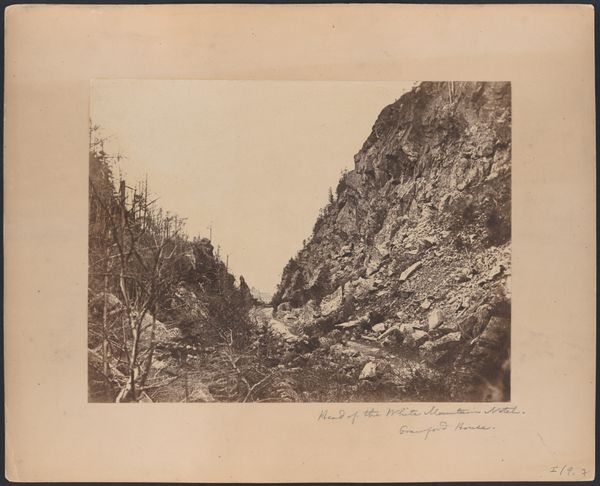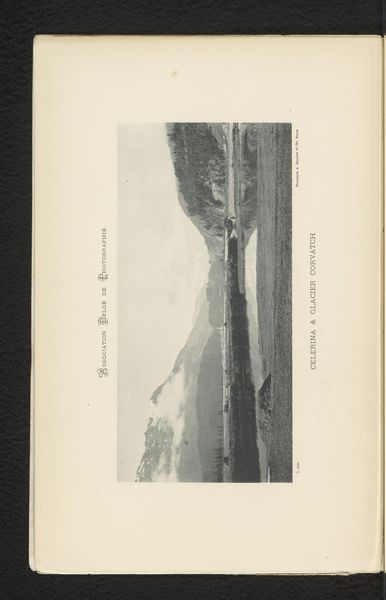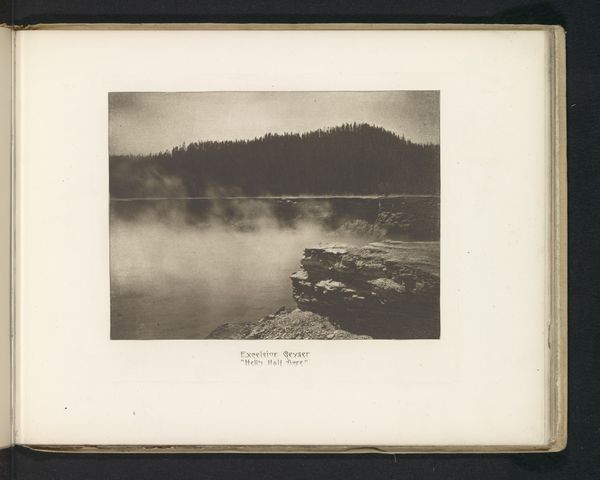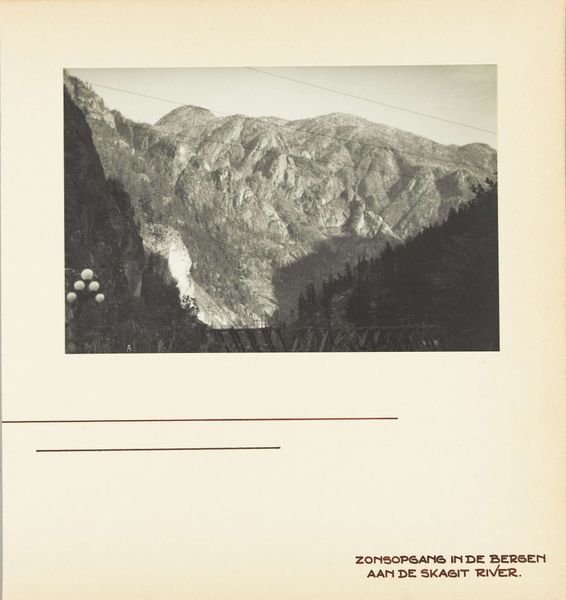![Electriciteitsverbinding tussen Gorge centrale en de Diablo Dam, Washington [staat], Verenigde Staten by Wouter Cool](/_next/image?url=https%3A%2F%2Fd2w8kbdekdi1gv.cloudfront.net%2FeyJidWNrZXQiOiAiYXJ0ZXJhLWltYWdlcy1idWNrZXQiLCAia2V5IjogImFydHdvcmtzL2RmZDUyZjk5LTBkYjQtNDJiMC1hOTkzLTlhNWU5NDM1OTQ4NC9kZmQ1MmY5OS0wZGI0LTQyYjAtYTk5My05YTVlOTQzNTk0ODRfZnVsbC5qcGciLCAiZWRpdHMiOiB7InJlc2l6ZSI6IHsid2lkdGgiOiAxOTIwLCAiaGVpZ2h0IjogMTkyMCwgImZpdCI6ICJpbnNpZGUifX19&w=3840&q=75)
Electriciteitsverbinding tussen Gorge centrale en de Diablo Dam, Washington [staat], Verenigde Staten 1936
0:00
0:00
photography, gelatin-silver-print
#
landscape
#
photography
#
gelatin-silver-print
#
line
#
cityscape
#
modernism
#
realism
Dimensions: height 153 mm, width 227 mm, height 315 mm, width 285 mm
Copyright: Rijks Museum: Open Domain
Curator: This gelatin silver print from 1936 is titled "Electriciteitsverbinding tussen Gorge centrale en de Diablo Dam, Washington [staat], Verenigde Staten," by Wouter Cool. Editor: Immediately, I am struck by the stark contrast and sharp angles bisecting this seemingly tranquil landscape. It's as if industry has aggressively imposed itself onto nature. Curator: Yes, the composition utilizes a striking interplay of horizontal and diagonal lines formed by the power lines, which command attention and suggest forward momentum and tension within the photograph's pictorial space. Notice how the photographer emphasizes the stark utility against the surrounding mountains. Editor: Exactly. I find myself thinking about the labor involved in constructing these power lines. The presence of what looks like temporary construction at the water's edge shows just how much of the material and manpower were involved to transform this area into an electrical grid. Curator: In line with formalist principles, we can regard this tension not as a historical reality, but a masterful strategy to evoke emotion from a purely visual experience. The artist guides the viewer's gaze upward from the landscape to the meticulously rendered web of transmission cables overhead. It also highlights the transition in style through photography as art; eschewing sentimental or decorative styles in favor of modern and practical designs. Editor: I suppose if you ignore the obvious commentary on the industrial transformation of nature that is present within this photograph, that could be true! But to simply appreciate the lines would gloss over the very important narrative about development, land use, and labor, that these pictures have always offered. These straight, unadorned lines demonstrate what that transformation really demanded: the remaking of the American landscape through human industry. Curator: Perhaps, yet isn’t the power of form and structure enough? I would argue that its intrinsic aesthetic qualities—balance and linearity—provide deeper layers beyond just historical context. Editor: Ultimately, both these observations demonstrate the depth contained within a singular image; lines that evoke not only feeling but industrial commentary.
Comments
No comments
Be the first to comment and join the conversation on the ultimate creative platform.
